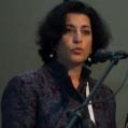Plasma phytoestrogens and subsequent breast cancer risk.
Kata kunci
Abstrak
OBJECTIVE
Phytoestrogens are plant compounds that are structurally and functionally similar to mammalian estrogens. By competing for estrogen receptors, phytoestrogens possibly inhibit binding of the more potent endogenous estrogens and decrease their potential effects on breast cancer risk. We investigated the association between plasma phytoestrogen levels and breast cancer risk in a prospective manner.
METHODS
We performed a nested case-control study within the Prospect cohort, one of the two Dutch cohorts participating in the European Prospective Investigation into Cancer and Nutrition. A total of 383 women (87 pre- or perimenopausal women [mean age, 52 years] and 296 postmenopausal women [mean age, 59 years]) who developed breast cancer were selected as case subjects and were matched to 383 controls, on date of blood sampling. Plasma levels of isoflavones (daidzein, genistein, glycitein, O-desmethylangolensin, and equol) and lignans (enterodiol and enterolactone) were measured. The isotope dilution liquid chromatography/tandem mass-spectrometry method incorporating triply 13C-labeled standards was used for all analyses. Breast cancer odds ratios were calculated for tertiles of phytoestrogen plasma levels using conditional logistic regression analysis.
RESULTS
For genistein, the risk estimate for the highest versus the lowest tertile was 0.68 (95% CI, 0.47 to 0.98). Similar protective effects, although not statistically significant, were seen for the other isoflavones. Lignan levels did not appear to be related to breast cancer risk. Results were the same in pre- or perimenopausal women, and in postmenopausal women.
CONCLUSIONS
High genistein circulation levels are associated with reduced breast cancer risk in the Dutch population. No effects of lignans on breast cancer risk were observed.


